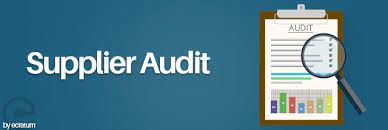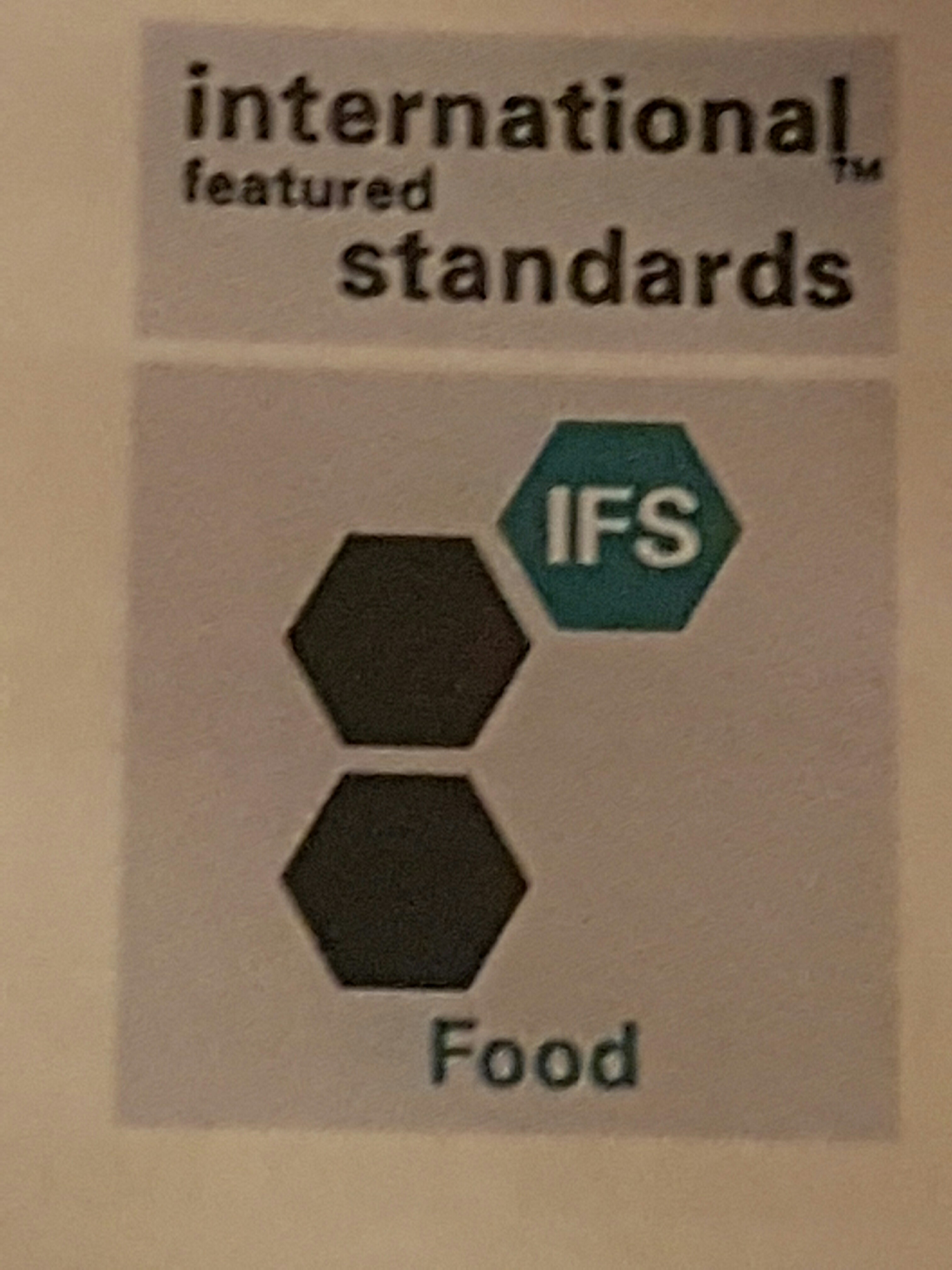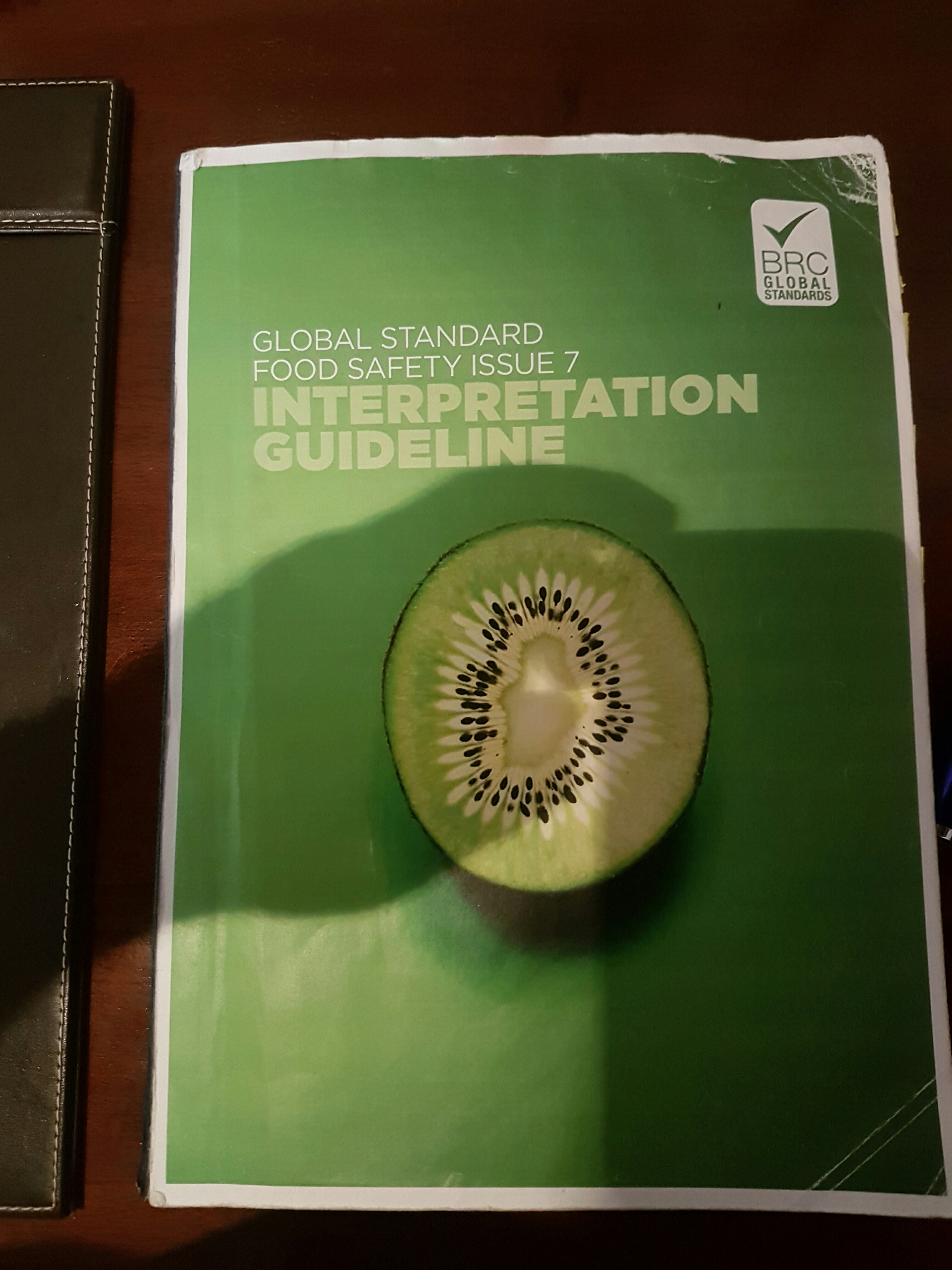Title Page
-
Conducted on
-
Auditor(s)
-
Observers
-
Business Audited
-
Business Address
-
Contact Name
-
Contact Email
-
Contact Phone
Untitled Page
-
Plant Summary
-
Nature of Review:
- Food Safety
- GMP
- Documentation
- Vendor Assurance
- Building Integrity
- Pest Management
- Quality Systems
-
Site Certification
-
Materials Supplied to GSF Fresh
GMP Checklist
Section 1.0 – Management System & Key Responsibilities
-
Have policies and systems for the management of Food Safety, Quality, OHS and Environment been documented and implemented?
-
Does the site has Food Safety Culture plan in place?
-
Have risk assessments been conducted for Food Safety, Quality, OHS and Environment? Are these reviewed regularly by senior management?
-
Is there a policy and procedure for crisis management, including loss of key services eg water, electricity, gas, waste disposal? Is it tested annually?
-
Is there a system in place to limit the loss of Business information and is there a data recovery plan?
-
Has the Business appointed a person with specific responsibility and accountability for food safety performance?
-
Is there documented Change Management Procedure in place?
Section 2.0 – People, Training & Communication
-
S2.1 Training
-
Does a policy or procedure exist for training?
-
Does a Training Plan exist for staff in manufacturing related areas which covers the area of Food Safety, GMP and Allergen?
-
Does the Training cover competencies test?
-
Do these competencies cover critical elements of Food Safety and GMP?
-
Are these reassessed annually?
-
Is there an induction program?
-
Is GMP provided as part of the requirements of the Induction process?
-
Do Induction and training procedures cater for contracting and temporary personnel?
-
Do documented training procedures exist; are they maintained and reviewed?
-
Do full training records exist; are they maintained and reviewed?
-
2.2 Personal Hygiene – Raw Material Handling, Preparation, Processing, Packing And Storage Areas
-
Is there a documented Personal Hygiene Standard or Policy covering the following: <br>• All hair shall where appropriate be fully contained to prevent product contamination. (Hair = not cleanly shaven that day) <br>• Fingernails shall be kept short, clean and unvarnished. No false or acrylic fingernails or false eyelashes. For visitors with false or acrylic fingernails, gloves may be worn whilst in the manufacturing area. <br>• Jewellery and watches shall not be worn, with the exception of a plain wedding ring and medic alerts. <br>• Any personnel, contractors or visitors affected with a disease or illness capable of being transmitted through the contamination of food must report this to management. This information must be recorded in an illness register. Eg infected wounds, skin infections, diarrhoea and hepatitis. <br>• Smoking, eating and drinking shall only in designated areas. <br>• Hand cleaning shall be performed at a frequency that is appropriate. Ie after every absence from the workstation or any activity that may contaminate the hands eg coughing, sneezing, handling waste, etc. <br>• All steps should be taken to prevent flavour tainting of susceptible products. Eg strong perfume or aftershave should not be worn. <br>• All personal effects and medication are stored in appropriate amenities, away from the manufacturing area. <br>• Is there adherence to this Policy?
-
2.3 Protective Clothing – Food Handlers and Others Working or Visiting Food Handling Areas
-
Does a Policy or Procedure exist that covers: <br>• Dedicated protective clothing & footwear are worn on site. <br>• Where there are exposed product streams or primary packaging, the minimum standard will be long sleeved shirts and long pants
-
Is the protective clothing laundered in such a way to protect the integrity of the product?
-
Does employees adhere to the PPE policy?
-
Protective clothing shall be suitable for its intended use, which do not pose a foreign object risk
-
Are steeltoed shoes worn in forklift and heavy equipment handling areas?
-
If gloves are worn are they subject to the same control as unprotected hands?
-
2.4 Medical Screening
-
Does the Business have a policy on medical screening?
-
Is it cover in staff induction?
-
Does this include clearance for return to work?
-
Is there an illness register that is used to report diseases transmissible to food by operators, contractors or visitors suffering from those diseases? Eg diarrhoea, skin infections, Hepatitis A
-
2.5 Hazardous Materials
-
Does the site store or use any hazardous materials in such a way that may cause contamination of raw materials, packaging, process equipment or finished goods? Eg pest control chemicals, cleaning products or process waste
Section 3.0 Product Protection
-
3.1 Hygiene & Sanitation
-
Are cleaning & sanitising procedures documented and authorised?
-
Are there documented cleaning & sanitising schedules for all critical areas (including building & surrounds)?
-
After completion of cleaning & sanitising activities, do appropriate operations personnel sign off records?
-
Do authorised personnel review cleaning & sanitising procedures & schedules annually for suitability?
-
Are inspections carried out & recorded, both after cleaning and prior to the commencement of manufacture, by suitably authorised & trained personnel?
-
Is there a verification program in place to monitor effectiveness of Hygiene & Sanitation Program & GMP Program?
-
Is cleaned equipment protected to prevent recontamination?
-
Are all containers clearly and accurately labelled with their contents?
-
How does the site ensure that the chemicals are approved & used according to the suppliers recommendations e.g. Dilution rate, PPE, MSDS, etc
-
Is unused or obsolete equipment appropriately stored and protected after cleaning?
-
3.2 Pest Management
-
Is there an integrated pest management program?
-
Are the target pests known eg avian, rodents, vermin, flying and crawling insects?
-
Are there programs in place to report any pest sighting on site?
-
Are there inspection and monitoring programs in place?
-
Are pesticides used: if so are they approved, MSDSs available, correctly used so that the risk of product contamination is controlled?
-
Are insectocutors, bait stations etc located so that there is no risk to product, packaging or equipment?
-
Are all pest control devices mapped?
-
Are they secure and tamper resistant?
-
Are current licenses available for all operators servicing the site?
-
3.3 Foreign Matter Control in Processing Areas
-
Has the foreign matter risk been assessed?
-
Where potential risks have been identified, is it managed? Eg by use of: metal detectors, visual inspection, X Ray or vision systems, sieve, magnets or filters as appropriate to the task?
-
Are effective verification programs in place to monitor performance of Equipment such metal detectors, x ray, magnets, sieves etc
-
Are procedures in place to identify the cause of positive rejections? Are they effective?
-
Is lighting in the process area shatterproof or has it been appropriately protected?
-
Are utensils and containers unbreakable and designed and used to prevent contamination eg not made of glass, wooden handles etc?
-
Are wooden pallets restricted to designated areas of the facility?
-
3.4 Water Quality
-
Has a risk assessment on water used for processing and cleaning been carried out and documented?
-
Program to test the water quality to portable drinking standard is being implemented on regular basis and documented (micro and heavy metal testing)
Section 4.0 Process Control
-
4.1 Inspection and Testing
-
Is there a Policy or procedure for inspection and testing?
-
Are specifications written for inputs, inprocess and finished goods?
-
Is compliance to these specifications verified?
-
Has an incoming goods testing program been established? Is this risk and history based?
-
Has a finished goods testing program been established? Is this risk and history based?
-
Are test results documented?
-
Are test methods documented based on recognised standards?
-
Are staff responsible for sampling and testing trained and competent?
-
Are they assessed on an annual basis?
-
Have corrective actions been raised and taken for recurring nonconformances?
-
Has external testing been carried out by an appropriately qualified/certified laboratory?
-
Are representative Retention Samples retained from productions runs?
-
4.2 Calibration
-
Is there a documented calibration program that covers all process control points eg scales, load cells, temperature controllers?
-
Do calibration procedures include method, frequency of calibration and acceptance criteria?
-
Is there compliance with the documented program?
-
When out of calibration equipment is detected are there procedures to ensure that product tested by that equipment is segregated for reevaluation?
-
Is there a method for identifying the calibration status of the equipment?
-
External Calibration <br>• Are these calibrations carried out by a licensed contractor, to traceable international standards? <br>• Calibration reports and service reports shall be provided for each service carried out and stored for the required amount of time? According to the following: Shelf life: <12 months = 4 years & if >12months = 6 years? <br>• Equipment or process control points shall have labels, stickers or tags present indicating last service, next service due and traceability details of last service conducted
-
Does the Internal program verify the ongoing accuracy of the equipment? Ie Challenges are carried out against a known accuracy standard?
-
4.3 Allergens
-
Is there a documented Allergen Management Policy to ensure that all materials that fall under this section are properly identified & segregated to avoid any form of cross contamination?
-
Does the Policy include: <br>• Risk Assessment <br>• Allergen Register <br>• Raw Material Receipt & Storage <br>• Production Scheduling/Planning <br>• Rework • Cleaning Programs <br>• Employee Practices eg: aprons <br>• Employee Training <br>• Utensils/Equipment <br>• Labelling <br> -Mandatory <br> -Voluntary <br>Is there adherence to the Policy?
-
Has a validation program been undertaken to demonstrate effectiveness cleaning procedures?
-
Is there a Verification Program in Place?
-
If cross contamination cannot be avoided there is a labelling policy that ensures consumers are protected? Does the site use vital assessment?
-
4.5 Rework / Drop product policy
-
Is Rework used within the process?
-
Is there a documented Rework Procedure?
-
Is the person authorising Rework appropriately trained?
-
Are records kept relating to all rework origins & source of use?
-
Is there a drop product policy/procedure?
-
Are the operators trained on the drop product procedure?
-
4.5 Preventive Maintenance
-
Is there a Preventive Maintenance schedule?
-
Is there evidence of compliance with records kept?
-
Is there a clearance procedure for hand over to manufacturing after maintenance work?
Section 5.0 Quality Management
-
5.1 Internal Audits
-
Is there a Policy & Procedure for Internal Audits?
-
Is there an appropriate schedule to identify what audits are carried out and their frequency?
-
Where audits have identified nonconformance have appropriate corrective actions been identified and implemented?
-
Do appropriate audit records exist?
-
5.2 Documentation and Records
-
Is there a system that is designed to ensure that appropriate, correct, and current essential documents are available where they are needed? Eg Document Control?
-
Are there agreed specifications for the quality of the material inputs (ingredients/packaging) and outputs?
-
5.3 Vendor Assurance
-
Is there a formal program for Vendors that addresses selection criteria and performance measurement?
-
Does this program ensure all their inputs are sourced from vendors that have a demonstrated capability of matching the necessary quality and food safety requirements?
-
Does the site conduct checks on their incoming raw materials against the specs and CoA?
-
Does the Site obtain CoA from the suppliers to check for the Raw Material Quality for each delivery?
-
Are Corrective Actions for nonconformances enforced in conjunction with the Vendor?
-
5.4 Materials Handling, Storage & Distribution
-
Is product stored and transported in such away as to assure product integrity?
-
Is there an effective stock rotation system?
-
Are there any materials that require controlled storage conditions? Eg temperature, humidity
-
Is the environment controlled and those parameters defined and recorded?
-
Are pallet racking and/or storage away from walls and elevated?
-
Is isolated stock sufficiently segregated to prevent accidental sale, delivery or contamination of adjacent products?
-
In the manufacturing area are only nondiesel or nonpetrol powered forklifts used?
-
5.5 Control of Nonconforming Product
-
Is a formal Hold/Release procedure documented and implemented?
-
Does the system allow for the appropriate physical segregation and marking of nonconforming materials?
-
Is there a documented system that ensures any process or product that is out of specification and is allowed to continue is documented and controlled to maintain traceability of that product?
-
Is the decision to release material made by an appropriately authorised person?
-
5.6 Product Identification and Traceability
-
Is lot coding applied to all product and is it labelled for traceability?
-
Does the system allow for trace back on all input materials?
-
Does the system allow for recording of input batch codes or other identifying information?
-
Does the system allow for forward trace of finished goods?
-
Does the system allow for tracing of rework in the process?
-
5.7 Product Recalls
-
Is there a documented policy and procedure?
-
Is this tested, does it cover: <br>Trace back, Inprocess identification and Forward trace?
-
Is there an Annual Review? Does it include: <br>A Recall simulation? <br>A review of the contacts and their details?
-
5.8 Consumer & Customer Complaints
-
Is there a documented procedure that describes the way customer/consumer complaints are receipted and managed?
-
Does the Business conduct trend analysis on these complaints?
-
5.9 Laboratory Practices
-
Does the system ensure that all test undertaken are done so against recognised standards or methods that have been validated to show repeatability?
-
Are all Laboratory staff appropriately trained and qualified?
-
Does the laboratory conduct performance comparisons that cover equipment, methods and people with other laboratory services?
Section 6.0 Hazard Analysis Critical Control Point (HACCP) SYSTEM
-
Has an effective HACCP Plan been written, implemented and verified?
-
Have operators monitoring CCPs undergone appropriate training?
-
Are the CCPs and quality monitoring points adequately equipped?
-
All CCPs are validated, verified and monitored?
-
Do the plans cover all products and processes?
-
Does the site conduct a minimum or annual HACCP review?
-
Does the Change Management procedure trigger when a HACCP Review or Food Safety Risk Assessment is required?
Section 7.0 Factory Standards
-
7.1 Facilities (hand washing)
-
Are sufficient hand washing facilities available at the entrances to and in the manufacturing areas?
-
Do they meet regulatory requirements – warm water and soap?
-
Are the facilities used correctly and for no other purpose?
-
7.2 Building & Equipment Design, Layout and Maintenance
-
Is the building designed and constructed to prevent contamination from external sources? (dust, odour, waste, pests, etc)
-
Are the general building conditions sound and clean?
-
Are necessary measures in place to prevent contamination from neighbours?
-
Are the internal facilities free of areas where contamination of food could occur?
-
Does the process flow through the premises, facilitate the production of safe food?
-
Are floors, walls, ceilings and their joints impervious and readily cleaned and sanitised where necessary?
-
Are service lines, equipment and structures appropriately segregated from food production areas?
-
Are they sound and clean?
-
Are service lines, equipment and structures located to facilitate the cleaning of other equipment?
-
Do drains permit maximum waste flow without blocking or overflowing?
-
Does the sanitation program cleaning of drains and drain gullies?
-
Are lighting and other breakable fixtures designed to prevent shattered glass or debris spreading?
-
7.3 Food Security and Site Security
-
Site Security: <br>Is security of Premises, Plant, Products, Employees, Contractors and Visitors in place and enforced?
-
Does the site conduct site security assessment?
-
Does the site conducted a food defense threat assessment to identify potential threats that can be caused by a deliberate act of sabotage or terrorist-like incident
-
Does the site has food defense plan that are documented and implemented?
-
Does the site has a method to identify the site's vulnerability to food fraud, including the susceptibility to raw material or ingredient substitution, finished product mislabelling, dilution or counterfeiting? If they do, is it documented, implemented and maintained?
-
A food fraud mitigation plan shall be developed and implemented that specifies the methods by which the identified food fraud vulnerabilities shall be controlled, including identified food safety vulnerabilities of ingredients and materials.
-
The food fraud vulnerability assessment and mitigation plan shall be reviewed and verified at least annually with gaps and corrective actions documented. The records of reviews shall be maintained.
-
7.4 Waste Management
-
Does the Waste Management system ensure that specifically marked containers are used to store waste, raw materials, product and packaging?
-
Is there an appropriate waste management contract that allows for regular servicing of waste bins?
-
Are waste bins and waste management areas suitable, identified and clean?
-
Are external waste bins and storage area controlled and maintained to prevent putrefaction of waste?
-
7.5 Lockers / Changerooms
-
Are change rooms, lockers and lavatories separated from the processing areas?
-
Do all lockers have a 45o sloped top and are they elevated to facilitate cleaning?
-
7.6 Maintenance Workshop
-
Is the maintenance area tidy and orderly?
-
Is there a separation of food contact with non-food contact chemicals?













